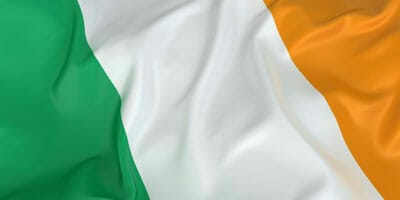Ireland’s sovereign wealth fund has to delicately balance the twin demands of being a long-term investor with providing capital to rebuild the shattered Irish economy.
The National Pensions Reserve Fund mandate is being reviewed to allow for more investment in Irish infrastructure, venture capital and providing credit to small-to-medium-sized businesses.
NPRF director Eugene O’Callaghan says the change in mandate will affect its investments domestically, as well as its equity allocation, and was open to discussing the fund’s investment approach in light of this.
He would not be drawn on how these discussions, between government and the fund’s commission, are progressing or what limits may be set on the level of domestic concentration for the discretionary portfolio.
“There clearly has to be some indication of quantum and some indication of portfolio concentration and they are the sorts of issues that have to be met,” O’Callaghan says.
As the eventual owner of the fund, however, the Irish Government has used the NPRF to buttress its economy from the aftershocks of the financial crisis.
Since 2009 the fund has invested €20.7 billion ($27.38 billion) in preference and ordinary shares in Allied Irish Banks and the Bank of Ireland, including a $13.2 billion injection of capital in July last year.
At the end of 2011 these investments held in the “directed portfolio” made up more than 63 per cent of the overall portfolio, with the $7 billion $7 billion discretionary portfolio making up around 37 per cent.
O’Callaghan says that any investment in Ireland must be based on commercial considerations.
“The investment in Ireland must still stack up in terms of risk and return but the portfolio would have more assets in Ireland than you might normally expect in a pure portfolio.”
The fund will be what O’Callaghan describes as a “cornerstone” investor in a number of funds, with the hope that its seed investment will encourage other institutional investors to see opportunities in green shoots emerging from the Irish economy.
This initial capital has included a $330.8 million commitment to an infrastructure fund in November last year. The aim is that the infrastructure fund will attract enough institutional interest to reach $1.32 billion in size.
The new fund has been established by Irish Life Investment Managers (ILIM) and AMP Capital, global infrastructure manager, has been appointed as the fund’s discretionary infrastructure investment manager.
It is understood that AMP Capital has been meeting with investors in the Asia Pacific region who may be interested in exposure to Ireland.
This investment in infrastructure follows a $39.7 million investment in two venture capital funds in October.
Mandate-led investment approach
“The NPRF is mandated to take the lead role in the development and establishment and implementation of these funds and we would be a cornerstone investor,” O’Callaghan says.
The overhanging question of the fund’s mandate has shaped the investment approach of the fund.
This has led the investment team to focus on managing any potential drawdowns as a result of downturns in equity markets, as well as a concern about maintaining the liquidity of the fund.
The fund had previously flagged that it would seek more diversification through expanding its absolute returns portfolio from 3 per cent of the overall discretionary portfolio to 5 per cent.
However, concerns about maintaining ongoing liquidity led the fund to pull out of a potential fund-of-hedge-fund investment that O’Callaghan describes as being “almost there”.
It has also shaped its approach to other asset classes, with the fund preferring to invest in listed infrastructure and liquid commodities.
“Effectively, we have been running a policy of not worsening the liquidity of the fund by any move that we take, so we have been able to implement, for example in commodities, a note which is liquidate with a day’s notice,” O’Callaghan says.
The question of the fund’s mandate has also influenced the fund’s decisions around its equity portfolio.
The fund has been gradually diversifying its portfolio since it held 80 per cent of its assets in equities on inception.
This now stands at 34.7 per cent of the portfolio and the investment team decided to take out put-option protection worth 4.9 per cent of the discretionary portfolio midway through last year.
O’Callaghan says the insurance was fortuitous, given the steep decline in global markets over the third quarter of last year.
“We felt at the time there was a lot of risk that was not priced in terms of the Eurozone and the US economy in particular, so we bought two-year put-option protection. We basically paid away a premium for that, but it was quite a modest premium in the overall scheme of things,” he says.
The put option also left the investment team certain that when the government came calling for funds to invest in the Irish economy that it would not be diminished by losses on equity markets.
“It allowed us to persist with our long-term investment strategy, but with the comfort that if Armageddon happened we would still basically have the €5 billion that the stakeholder expected us to have,” he says.
The discretionary portfolio achieved has reported a preliminary return of 1.6 per cent in 2011, compared with a 3.5 per cent loss for the average Irish-managed pension fund.
Since inception it has achieved an annualised return of 3.3 per cent.
At the end of 2011 the directed portfolio held $12 billion, with this valuation subject to an independent review of the fund’s investments in Allied Irish Banks.
The fund has also received a total of $2.38 billion in cash from Bank of Ireland preference share dividends, the repurchase of warrants by the bank and the sale of ordinary shares to a consortium of private investors.


